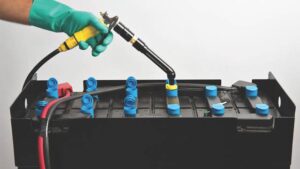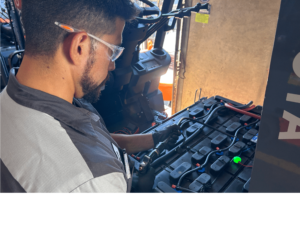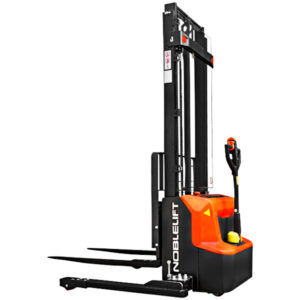Archive for December, 2023
Why You Need Toyota 360 Support
You may have come across the terms Toyota 360 Support and Toyota 360 Support Plus, but understanding the nuances can be perplexing. Fear not! In this blog post, we aim to demystify these plans by answering frequently asked questions to understand what each provides and why it’s essential to productivity.
What is Toyota 360 Support?
At its core, Toyota 360 Support embodies Toyota’s commitment to being your partner throughout the entire lifecycle of your material handling equipment. The lifecycle encompasses the processes of buying, owning, servicing, and eventually replacing the equipment when necessary.
Why is Toyota 360 Support necessary?
Downtime is the adversary, and Toyota 360 Support is your shield. By optimizing the performance of your investments, preventing downtime, and safeguarding your bottom line, this support plan ensures you get the most out of your material handling equipment.
What does Toyota 360 Support include?
Toyota 360 Support has many benefits, including a guaranteed 4-hour response time for emergency service requests and a 2-year warranty on genuine parts—all at no additional cost.
What about the cost of Toyota 360 Support?
Good news! Toyota 360 Support is a standard feature in Toyota’s industry-leading warranty, so there’s no extra cost to you.
Can I still get Toyota 360 Support if I relocate?
Absolutely! Toyota has you covered, regardless of your location. Toyota 360 Support provides access to a vast network of over 3,500 certified Toyota technicians and more than 220 dealer locations nationwide.
What is Toyota 360 Support Plus?
Building upon the foundation of Toyota 360 Support, Toyota 360 Support Plus takes it a step further by offering additional perks, such as the first year of Planned Maintenance (up to 4 PMs), carriage-to-counterweight coverage for up to 3 years or 6,000 hours, and a 5-year major component coverage.
How much does Toyota 360 Support Plus cost?
The cost of Toyota 360 Support Plus varies based on the specific model of your material handling equipment. You can find the pricing details for your model on the Toyota website.
Can I get Toyota 360 Support Plus with T-Matics installed?
Indeed, although there is a slightly higher cost associated with it. Detailed pricing information for specific models with T-Matics installed is available on the Toyota website.
Can I extend Toyota 360 Support Plus beyond three years?
Absolutely! Toyota 360 Support offers 4- and 5-year options for most models. Check the Toyota website to see if an extended plan is available for your specific model.
How much money can I save with Toyota 360 Support Plus?
Savings with Toyota 360 Support Plus are substantial, but the exact amount depends on your specific model. Visit the Toyota website for a value comparison tailored to your equipment.
Is Toyota 360 Support Plus available if my business is far from a Toyota dealership?
Toyota 360 Support Plus pricing and availability apply to customer locations within 50 miles of a Toyota Forklift dealership. Additional charges may apply beyond this distance.
Ready to purchase a forklift with Toyota 360 or Toyota 360 Support Plus?
Contact us to set up a free consultation. Our knowledgeable material-handling professionals can assist you in finding the perfect forklift and 360 Support plan for your specific needs.
Watch a video to learn more about Toyota 360 and 360 Support.
Why You Need To Water a Forklift Battery
As essential workhorses in warehouses, distribution centers, and industrial settings, electric forklifts rely on their batteries to power their operations efficiently and reliably. Proper maintenance is crucial to ensure peak performance and prolong the lifespan of these vital energy sources.
One critical aspect of forklift battery maintenance is watering. This blog post will delve into the significance of watering a forklift battery, exploring why it is necessary, and the steps to ensure optimal watering practices. By understanding the importance of watering and implementing the proper techniques, you can unlock the full potential of your forklift battery, boosting productivity while safeguarding your investment.
Why Watering a Forklift Battery is Necessary 
It’s essential to follow manufacturer guidelines and recommendations for watering frequency, water quality, and specific maintenance procedures to ensure the best performance and longevity of the forklift battery. Here are some of the reasons it is necessary to water a forklift battery.
- Compensate for Water Loss: During regular charging and discharging, a forklift battery can lose water due to evaporation and electrolysis. Watering the battery helps replenish the lost moisture and maintain proper electrolyte levels.
- Maintain Electrolyte Balance: The sulfuric acid electrolyte inside the battery needs to be diluted with water to maintain the correct concentration. Proper electrolyte balance is essential for the battery’s optimal performance and longevity.
- Prevent Drying Out: Insufficient water levels can lead to the drying out of the battery plates. Adequate watering ensures that the plates remain immersed in the electrolyte, promoting efficient chemical reactions and prolonging battery life.
- Control Temperature: Water acts as a coolant for the battery, regulating its temperature during operation. Sufficient water levels help dissipate heat and prevent excessive battery overheating, which can negatively impact performance and lead to premature failure.
- Maximize Battery Efficiency: Proper watering helps the battery operate at its peak efficiency. Maintaining the correct electrolyte levels promotes consistent voltage and capacity, resulting in optimal power output and longer runtimes for the forklift.
Eessential Tips for Watering a Forklift Battery 
Here are six tips for watering a battery:
- Before proceeding with watering, ensure that the battery has a full charge; if it doesn’t, refrain from watering at that time.
- Remove all vent caps from the battery and carefully inspect them to ensure they are free from defects or damage.
- Check the gravity readings from all cells. If possible, take note of the water levels or if any cell is too dry for gravity readings.
- Begin filling the battery with water, ensuring you reach the appropriate water levels for each cell.
- Once the watering is complete, securely replace all vent caps on the battery.
- Wipe off any water that may have dripped onto the battery, ensuring it is dry and clean.
Watering a forklift battery is a fundamental aspect of battery maintenance that directly impacts its performance, efficiency, and longevity. Regularly monitoring water levels, replenishing lost electrolytes, and following proper watering procedures can optimize your forklift battery’s power output, prevent premature deterioration, and extend lifespan.
Click here to read frequently asked questions about watering a forklift battery.
Do you need help with energy solutions or battery maintenance? TMHS recently partnered with Advanced Energy Solutions to give you access to the best energy experts in the industry. Contact AES to set up a free energy consultation today.
Get Tips for Buying a Heli Forklift
When choosing the right forklift for your material handling needs, Heli is a choice well worth considering. With their proven reliability, a wide range of models, competitive pricing, and environmentally conscious options, Heli Forklifts offer a package that’s hard to beat. In this blog, we’ll explore the pros and cons of Heli forklifts and provide essential tips for those considering a Heli forklift purchase.
Pros of Heli Forklifts
- Variety of Models: Heli offers a diverse selection of forklift models, including electric, diesel, and LPG (liquefied petroleum gas) forklifts. Whether your operations are indoors or outdoors, large or small, Heli’s wide variety allows buyers to find the right forklift for their specific needs. Explore our line of Heli Forklifts, and learn about Heli’s popular new Li-Ion model.
- Quality Engine Manufacturers: Understanding the engine is the most important part of a forklift, Heli carefully chose engines from top manufacturers, including Kubota, GM, Mitsubishi, PSI, Deutz, and Cummins.
- Competitive Pricing: Heli forklifts are often competitively priced compared to other brands, making them an attractive option for businesses looking to save on equipment investment.
- Global Presence: Heli has a worldwide presence and a widespread network of dealers and service centers, ensuring easy access to support and spare parts.
- Environmental Considerations: Heli offers electric forklift models that produce zero emissions, contributing to a greener and more sustainable workplace.
Cons of Heli Forklifts
- Limited Specialization: While Heli offers a broad range of forklift models, they may not be as specialized as some other brands in specific niche applications. Buyers with particular material handling needs may need to explore other options.
- Resale Value: Heli forklifts may have slightly lower resale value than some premium brands. However, this is often offset by Heli’s lower initial purchase price.
Tips for Buying a Heli Forklift
- Assess Your Needs: Before purchasing a forklift, evaluate your material handling requirements, including load capacity, lift height, and operational environment. Ensure the Heli model you choose aligns with these requirements.
- Maintenance and Service: Consider maintenance and service support availability in your region. A strong service network ensures timely repairs and maintenance, minimizing downtime.
- Operator Training: Proper operator training is essential for safe and efficient forklift operation and is an OSHA requirement. Make sure your operators receive the necessary training to use Heli forklifts.
- Consider Resale Value: While Heli forklifts offer cost savings upfront, remember that they may have slightly lower resale value. Weigh this against your budget and long-term plans.
- Environmental Impact: If sustainability is a priority for your business, Heli’s electric forklift models can help reduce your environmental footprint.
Well-trained operators can help reduce accidents and increase overall productivity. Sign up for forklift operator safety training classes at your location, or join us at our Santa Fe Springs headquarters on the first and third Friday of the month.
Heli forklifts are a compelling choice for businesses looking for reliable, competitively priced material handling equipment. By understanding the pros and cons and following the tips mentioned above, you can decide if a Heli forklift suits your specific operational needs and budget. Remember that the key to a successful forklift investment lies in choosing the right model and providing the necessary maintenance and training to ensure efficient and safe operation.
We have Heli Forklifs in stock and ready for delivery.
Contact us for a list of new, used and rental Heli Forklifts, and for service and parts for Heli or any other brand forklift in your fleet.
What You Need To Know About Forklift Fork Maintenance
Welcome to our comprehensive guide on forklift fork inspections and maintenance. As an integral component of forklifts, fork maintenance is essential to ensure optimal performance and minimize workplace risks. In this blog post, we delve into the frequently asked questions about inspecting forklift forks, daily checks, and common causes of damage. Whether you’re a forklift operator, warehouse manager, or safety supervisor, understanding these crucial aspects will contribute to a secure working environment and the prolonged lifespan of your forklift forks.
1. Why is it essential to inspect forklift forks daily?
Regular daily inspections of forklift forks are crucial to prevent potential hazards such as snapped forks, dropped loads, and injuries. Additionally, OSHA mandates daily inspections for all powered industrial trucks, including forks, to ensure workplace safety. Neglecting these inspections can lead to severe consequences.
2. How do forks typically get damaged?
Forks can sustain damage through various means, including:
- Wear from regular use
- Improper chain adjustments
- Minor accidents
- Fork use beyond rated capacity
- Driving with forks touching the floor
- Using a lifting chain on one fork to lift heavy objects
- Picking up loads too far out on the forks
- Attachments that stress the forks
3. What should you look for during a forklift fork inspection?
During a forklift fork inspection, pay attention to the following:
- Surface cracks: No cracks should be present on the forks, especially in the heel area and welds.
- Blade and shank angle: Check the angle between the blade’s upper face and the shank’s front face and replace the forks if the angle exceeds 93%.
- Straightness: Replace forks if they are bent more than 0.5% of the corresponding blade length or shank height.
- Fork tip height: Ensure that forklift blades are the same height and replace forks if there’s a noticeable difference between the tips.
- Positioning lock: Check the positioning lock or fork retention device to prevent malfunctions that could lead to accidents.
- Fork thickness: Use forklift calipers to measure the thickness of the fork blade, heel, and hook, replacing them if there is a 10% decrease, which reduces load capacity by 20%.
- Capacity stamp: The capacity stamps should always be visible on the forks.
4. How often should a professional technician inspect forklift forks?
Forklift forks should undergo a thorough inspection by a qualified service technician at least once a year to ensure optimal safety and performance.
5. How can I schedule a forklift inspection?
Our experienced technicians are available to inspect your forklifts and forks to ensure efficient and safe working conditions. Contact us to set up a service appointment today!

